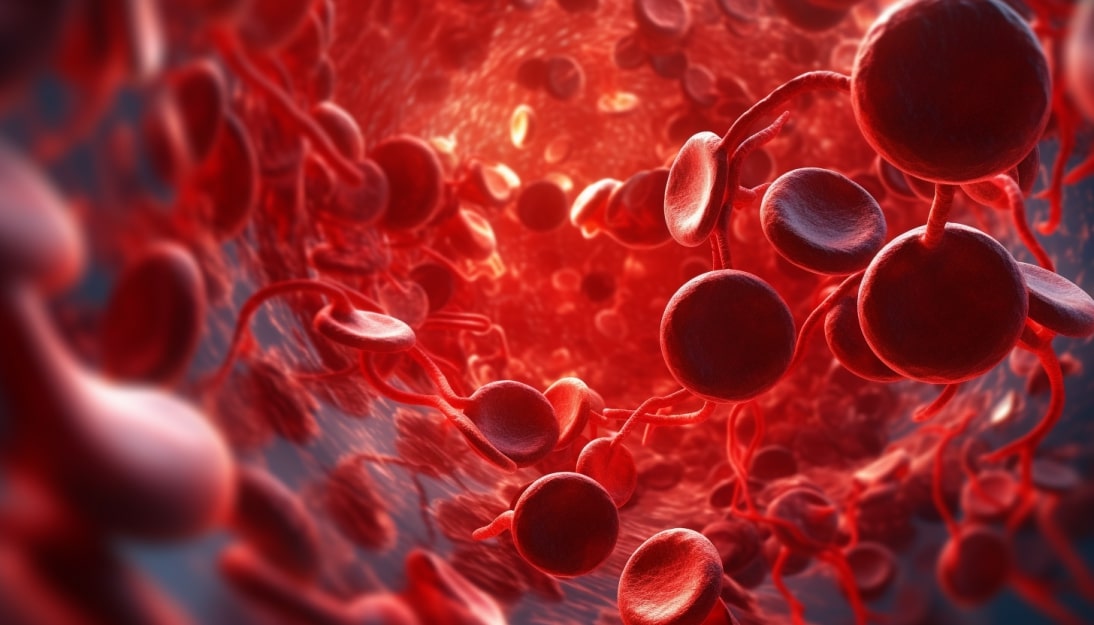A journey to the heart of health, wellness, and vitality starts with a simple touch. Massage therapy has been lauded throughout history for its healing powers. But in the realm of circulation, it comes into its own, serving as a lifeline for our bodies’ rivers of life – our blood and lymphatic systems. In a society increasingly aware of holistic health, understanding the role of massage therapy in boosting circulation is essential. Whether you’re an aspiring massage therapist or someone curious about improving your health, this article will take you on an expedition of discovery. You’ll uncover the science behind how massage invigorates our circulatory systems, explore different massage techniques, and learn how you can reap the countless health benefits that improved circulation brings.
The Magic of Touch: Introduction
Life is in constant motion, a ceaseless flow. And at the heart of this flow within our bodies is our circulatory system. It plays a vital role in delivering oxygen and nutrients to our cells and removing waste. One of the most effective ways to boost circulation and support this system is through the power of touch – specifically, massage therapy.
From ancient Eastern practices to modern Western adaptations, massage therapy has long been recognized as a means to promote better health. In recent times, scientific studies support the health benefits of massage therapy, particularly in boosting circulation. This article aims to bridge the gap between this ancient wisdom and modern science. We’ll help you understand the physiology of circulation, the mechanics of how massage therapy helps, and most importantly, how you can apply this knowledge to improve your health.
But first, let’s set the scene by understanding why good circulation is so crucial to our well-being. Circulation is the life force that keeps us going, fueling every cell, every organ, and every system in our body. When circulation is optimal, nutrients and oxygen are adequately delivered, waste is effectively removed, and our immune system functions at its best. However, a lack of movement, aging, certain health conditions, and even stress can hinder this crucial process. Here’s where massage therapy steps in, serving as a powerful tool to stimulate and enhance circulation.
The Anatomy of Circulation
Understanding how massage therapy boosts circulation requires a basic grasp of our circulatory system’s structure and function. In essence, our circulatory system consists of two main components: the cardiovascular and the lymphatic systems. The cardiovascular system comprises the heart, blood, and blood vessels. It’s like a vast highway that transports oxygen, nutrients, hormones, and other vital substances to our cells and carries away waste products.
On the other hand, our lymphatic system, often overlooked, plays a pivotal role in maintaining fluid balance and defending against disease. The lymphatic vessels transport lymph, a clear fluid containing white blood cells that help fight infection. Unlike the cardiovascular system, the lymphatic system doesn’t have a pump (like the heart) to propel fluid. Instead, it relies heavily on bodily movement and pressure changes within the body, making it particularly receptive to the benefits of massage.
Moreover, the circulatory system isn’t a standalone entity. It works synergistically with other body systems. For instance, studies show that the nervous system, through its control over heart rate and blood vessel dilation, directly impacts circulation. The skeletal system also influences circulation, as muscle contractions help propel blood and lymph. By understanding this interconnected nature, we can appreciate how massage therapy, which impacts multiple body systems, can significantly enhance circulation.
Key Takeaway: Our circulatory system consists of the cardiovascular and lymphatic systems, both of which are crucial for maintaining our overall health. They work synergistically with other body systems, creating an interconnected web of wellness in our bodies.
Unraveling the Connection Between Massage Therapy and Circulation
The human body is akin to an intricate network of rivers. When these rivers flow freely, life flourishes; when they become stagnant or blocked, life struggles. Massage therapy is a natural method to stimulate these internal rivers and enhance their flow. But how does this happen?
Massage therapy stimulates the lymphatic system, crucial for the body’s defense against disease. The rhythmic pressure of a massage encourages the flow of lymph fluid, enhancing the body’s natural detoxification process. Moreover, massage can also lead to increased production of red blood cells and white blood cells, further promoting health and wellness.
To add, massage therapy has a beneficial effect on the autonomic nervous system, which controls our ‘fight or flight’ and ‘rest and digest’ responses. The calming effect of a massage can help shift the body into the ‘rest and digest’ state (parasympathetic dominance), promoting better digestion, more effective immune response, and of course, enhanced circulation.
Key Takeaway: Massage therapy aids circulation by stimulating the lymphatic system, enhances the body’s natural detoxification process, and has a positive impact on the autonomic nervous system.
The Importance of Good Circulation for Optimum Health
With all the talk of boosting circulation, you might wonder why it’s such a big deal. Well, consider this – every cell in your body relies on a steady supply of nutrients and oxygen to function effectively. And guess what’s responsible for delivering these essential elements? Yes, you’ve got it – our circulatory system!
Good circulation ensures that our cells receive what they need when they need it. From our brains down to our toes, every part of us benefits from this continuous nutrient delivery service. Moreover, effective circulation aids in waste removal, reducing the buildup of toxins and helping to prevent disease.
In contrast, poor circulation can lead to a myriad of health issues. It can cause fatigue, memory loss, cold hands and feet, and even serious conditions like heart disease and stroke. So, enhancing circulation is more than just a ‘nice-to-have’; it’s a fundamental component of maintaining optimal health and preventing illness.
From this perspective, the value of massage therapy in boosting circulation becomes clear. It serves as a non-invasive, natural, and enjoyable way to support our body’s vital functions, contribute to our health and wellness, and enhance our quality of life.
Key Takeaway: Good circulation is fundamental for optimal health, as it ensures nutrient and oxygen delivery and waste removal. Massage therapy is a potent tool for enhancing circulation, thereby supporting overall health and wellness.
How Massage Therapy Boosts Circulation
Now that we’ve gained a fundamental understanding of our circulatory system and the role of good circulation in maintaining health, it’s time to delve deeper into the mechanics of how massage therapy aids in boosting circulation.
The practice of massage therapy focuses on manipulating the body’s soft tissues – the muscles, connective tissues, tendons, ligaments, and joints. When a massage therapist applies pressure on these tissues, it creates a physical force that displaces the fluids within them. This displacement encourages blood flow within the surrounding vessels and enhances the circulation of lymph within the lymphatic system.
The Art of Manipulating Soft Tissue: The Science Behind Massage Therapy
At the heart of massage therapy lies the art of manipulating soft tissue. By applying varying degrees of pressure and using different techniques, a massage therapist can stimulate blood flow in targeted areas, promoting healthier circulation throughout the body.
One of the mechanisms by which massage aids in enhancing circulation is through a process called vasodilation. Vasodilation refers to the widening of blood vessels, which allows more blood to flow through them. The mechanical pressure from a massage can stimulate this process, enhancing blood flow to the massaged area.
Moreover, the movement and pressure applied during a massage encourage the flow of lymph within the lymphatic system. As the lymphatic system relies heavily on movement to function effectively, the stimulation provided by a massage can significantly aid in lymph circulation, promoting detoxification and supporting the immune system.
The Impacts of Massage Therapy on Blood and Lymph Circulation
The physiological impacts of massage on our circulatory system are profound. As we’ve discussed, the pressure and movement applied during a massage can stimulate both blood and lymph flow. But what does this mean in practical terms?
Increased blood flow means more oxygen and nutrients can reach our cells, promoting their health and function. It also improves waste removal, reducing the accumulation of toxins in our tissues. This improved circulation can result in a variety of health benefits, such as faster recovery from injury, enhanced athletic performance, reduced muscle tension, better skin health, and improved immune function.
Furthermore, the enhancement of lymph flow through massage therapy supports our body’s natural detoxification processes. By aiding in the removal of waste and toxins, it can contribute to better overall health and increased resistance to illness. It’s no wonder that massage therapy is often recommended as part of a holistic approach to health and wellness!
Key Takeaway: Massage therapy enhances circulation through the mechanical pressure it applies, promoting vasodilation and stimulating the flow of lymph. This can lead to numerous health benefits, including improved cellular health, waste removal, and immune function.
Exploring Different Massage Techniques for Boosting Circulation
Massage therapy is not a one-size-fits-all practice. There are numerous techniques available, each with their unique approaches and benefits. Some methods are especially beneficial for boosting circulation, providing an invigorating rush of vitality throughout the body. Let’s delve into a few of these techniques.
Swedish Massage: A Classic Choice for Improved Circulation
When most people think of massage, they’re likely envisioning Swedish massage. This technique is one of the most widely practiced in the Western world and is well-known for its benefits to circulation. Swedish massage typically involves a variety of strokes, including gliding, kneading, and percussion strokes, all of which work synergistically to improve circulation. Long, flowing strokes stimulate blood flow towards the heart, enhancing overall circulation. As a result, Swedish massage is often recommended for individuals looking to boost their circulatory health.
Deep Tissue Massage: An Intense Approach to Enhanced Circulation
While Swedish massage focuses on the surface layers of muscle, deep tissue massage reaches into the deeper layers of muscle and connective tissue. This technique uses slow, firm strokes and deep pressure to alleviate tension and improve circulation in these areas. While it can be more intense than Swedish massage, the boost to circulation can be significant, making deep tissue massage an excellent option for those dealing with chronic muscle tension or injury.
Lymphatic Drainage: A Specialized Technique for Lymph Circulation
Unlike the techniques we’ve discussed so far, lymphatic drainage focuses explicitly on enhancing lymph circulation. This technique uses light, rhythmic strokes to stimulate the flow of lymph within the lymphatic system, aiding in detoxification and supporting immune function. It’s often used as a complementary therapy for individuals dealing with conditions that affect the lymphatic system, but it can also provide circulatory benefits for anyone looking to support their overall health.
Key Takeaway: There are a variety of massage techniques available, each with its unique benefits. Swedish massage, deep tissue massage, and lymphatic drainage are all excellent choices for those looking to boost their circulation through massage therapy.
Boosting Your Health: The Benefits of Improved Circulation Through Massage
We’ve covered a lot of ground, from understanding the circulatory system’s intricacies to exploring the mechanics of how massage therapy aids in boosting circulation. Now, it’s time to bring it all together by highlighting the health benefits of improved circulation through massage therapy.
Promotes Healing and Recovery
When circulation is improved, more oxygen and nutrients can reach our cells, including those involved in healing and recovery. This can speed up the healing process following an injury or intense workout, reduce inflammation, and alleviate pain.
Enhances Skin Health
Improved circulation also benefits our skin, the body’s largest organ. Increased blood flow can stimulate skin cell regeneration, promote collagen production, and aid in the removal of waste products, resulting in a healthier and more youthful appearance.
Supports Immune Function
As we’ve discussed, massage therapy can enhance lymph flow, which plays a crucial role in our immune system. By supporting the body’s natural detoxification processes and aiding in the production and transportation of immune cells, improved circulation can contribute to a stronger immune response.
Contributes to Overall Wellness
Last but certainly not least, improved circulation can contribute to our overall sense of wellness. It can reduce stress, promote relaxation, improve sleep quality, and even enhance mental clarity. It’s truly a full-body benefit!
Key Takeaway: The benefits of improved circulation through massage therapy are extensive, including promoting healing, enhancing skin health, supporting immune function, and contributing to overall wellness. Investing in massage therapy could be a valuable step towards a healthier, more vibrant you!
Embrace the Power of Touch: Starting Your Journey Towards Better Circulation
Now that you’re equipped with knowledge and understanding of how massage therapy can boost circulation for better health, it’s time to take the next step. Remember, as with any health-related practice, consistency is key. Regular massage therapy sessions can contribute significantly to maintaining good circulatory health.
Before embarking on this journey, consult with a healthcare professional, especially if you have specific health conditions. In Canada, massage therapy is a regulated health profession in certain provinces, including Ontario, British Columbia, and Newfoundland and Labrador. Choose a licensed practitioner to ensure you receive safe, competent, and ethical care.
Frequently Asked Questions
Can I boost circulation through self-massage?
Yes, self-massage can be an effective way to boost circulation. Techniques like dry brushing or using a foam roller can stimulate blood flow and lymphatic drainage. However, professional massage therapies often offer more profound benefits due to their expertise in various techniques.
Are there any risks associated with massage therapy?
While massage therapy is generally safe, there may be risks for individuals with certain health conditions, like deep vein thrombosis, burns, or certain types of cancer. It’s always important to consult with a healthcare professional before starting a new therapy.
How often should I get a massage to boost circulation?
The frequency of massage sessions can depend on individual health goals and conditions. However, many people find a massage every two to four weeks to be beneficial for maintaining improved circulation.
Can massage therapy replace my regular medical treatments?
No, massage therapy should not replace any current medical treatments or medications. Instead, it should be used as a complementary therapy alongside your regular health practices.
Where can I find a licensed massage therapist in Canada?
You can use the online directory provided by the Registered Massage Therapists’ Association of Ontario (RMTAO), the Massage Therapist Association of Alberta (MTAA), or the College of Massage Therapists of British Columbia (CMTBC) to find a licensed practitioner in your area.
Sources
- Gora, Anna. “Does Massage Help Circulation?” Livescience.com, Live Science, 29 Mar. 2022, www.livescience.com/does-massage-help-circulation. Accessed 29 May 2023.
- “Improved Circulation – Benefits of Massage – Massage – Treatments – Physio.co.uk.” Physio.co.uk, 2023, www.physio.co.uk/treatments/massage/benefits-of-massage/improved-circulation.php. Accessed 29 May 2023.
- “Increased Lymphatic Drainage – Cellular Effects – Physiological Effects of Massage – Massage – Treatments – Physio.co.uk.” Physio.co.uk, 2023, www.physio.co.uk/treatments/massage/physiological-effects-of-massage/cellular-effects/increased-lymphatic-drainage.php. Accessed 29 May 2023.

Mark Bentz is a highly experienced Registered Massage Therapist (RMT) with over two decades of practice. Despite having only two percent of his vision due to a progressive retinal degenerative condition, Mark’s unique perspective and heightened senses allow him to deliver a powerful and intuitive massage therapy experience. With a background in Human Kinetics and extensive training at the West Coast College of Massage Therapy (WCCMT), Mark is adept at identifying and releasing primary restrictions in the body, enabling the alleviation of secondary symptoms. Mark’s commitment to the field is further demonstrated by his active involvement with Provincial, National, and International massage therapy organizations. You can request a session with Mark by contacting Everest Therapeutics.








